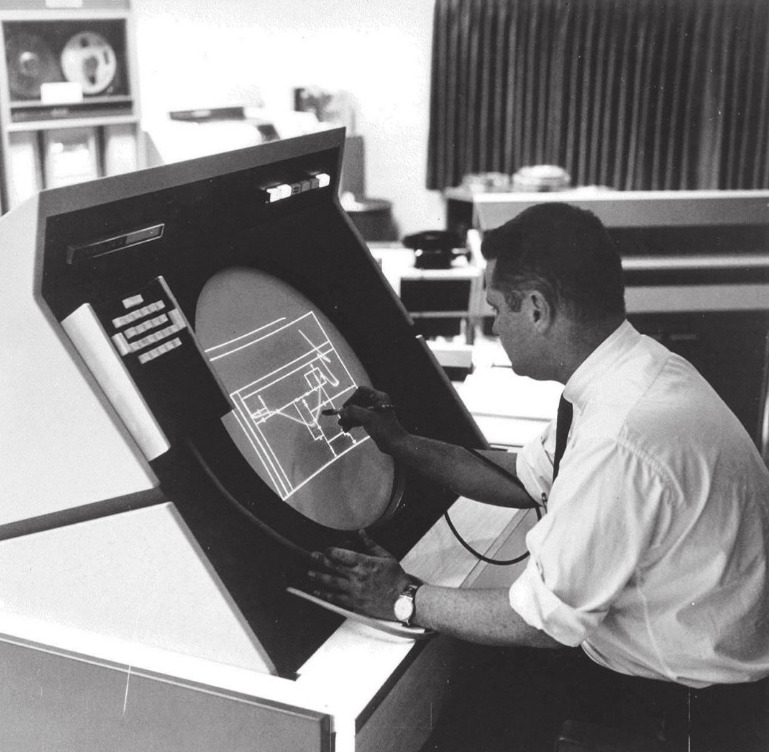Whoa, BSD predates V7? I had no idea.
I’ve been meaning to set up an 11 running 2BSD…
Artist / hacker from Providence, USA.
Whoa, BSD predates V7? I had no idea.
I’ve been meaning to set up an 11 running 2BSD…


Are the usb disk device names changing?


Yes, although the thing on my desk is just an x-term & media player, so “desktop system” doesn’t mean that much…
Mostly video performance (1080 vid stuttered badly, while it plays fine on the same machine under linux.) & compatability. (Not that I want to run a browser on my x-term, but it would be nice to have as a fallback option. Can’t install anything recent.) Oh, and extended attributes in the filesystem. I REALLY like being able to add name=val tags to a file. It’s immensely useful. That might be my favorite feature of linux? Funny.
Also, I was in the midst of switching from Solaris to Linux on my server, so it just seemed like a good idea to run the same OS on the desktop.


VERY simple. Time & node:
HH:MM node%
Except in the xterm I keep open for dealing with my camera. That’s time & last-word-in-cwd:
HH:MM dir%
Sometimes on a cellphone I will use battery charge percent:
BB%
And when I’m su’ed it’s just:
root%
Yup. Tried that, doesn’t work.
I do a lot of photography for a museum. In documenting historic artifacts (as in journalism) you’re not supposed to do any post processing. Not that I’d use a phone camera for those photos, but it’s an issue as those features creep into more serious cameras.


Void here too. I was mostly Solaris & OpenBSD for many years, Void is the first linux I’m happy to run on my main machines.
I realized I was going to be comfortable with Void when I saw in the docs that to config the network you just “put the commands in rc.local”. Ha ha. Yes, that’s how you’d do it in 7th Edition Unix! Back to the basics.


TCP/IP was… part of the BSD project? PDP-11 or VAX?
Our museum mostly collects minis from science & academia, so it leans REALLY heavily DEC.



Yeah, I’m familiar with VMS, and Cutler bringing a lot of the internal design to W/NT. (I’m told in particular a lot of the data structures for system calls in NT look like VMS.) My AIX experience has consisted entirely of “This is weird. This isn’t normal for Unix.” Ha ha. (I had a 1st gen RS/6000 at home briefly in the late 90s.)
And I do have a “grey wall” in my library:



My AIX experience is very limited. What was the VMS connection?


Windows NT ACLs come from VMS.
The Unix world has traditionally not liked ACLs because Multics had them, and Unix was an ultra-minimalist response to Multics.


TeX / LaTex documentation is infuriating. It’s either “use your university’s package to make a document that looks like this:” -or- program in alien assembly language.
I like postscript for graphic design, but not so much for typesetting. For a flyer or poster, PS is great.


Weird. I’ve programmed tek vector graphics terminals, and I’d never heard about this before today.
Actually, what’s really cool is the giant vector displays a few companies made in the 60s:



Most windows in X are actually two windows: one inset inside the other. That’s how you get a border & title bar. Does that account for the error you’re seeing?


Well, ACTUALLY, they’re only being elitist about the kernel, and they’re gatekeeping about userspace programs, SO…


I remember the first time I heard about the web. My exact response was: “That sounds like a waste of bandwidth.”
Ha ha. Oops.
(In the early 90s I was completely obsessed with usenet. The graphical nature of web pages seemed like a terrible idea to me.)
xterm. It emulates a terminal. What else would I want a terminal emulator to do?
The perfect terminal is the vt320. (I keep one plugged in to my router, since I can reach any machine from there.)
The default is that root does not have root access over nfs. In some situations, that results in root seeming to have LESS privs than other accounts.
But there are options to change that. On my home lan, root is root over nfs.
If the package manager on your old PC is keeping copies of everything it installs, just copy all of those packages over and go through the package manager on the new PC. Look under /var/cache